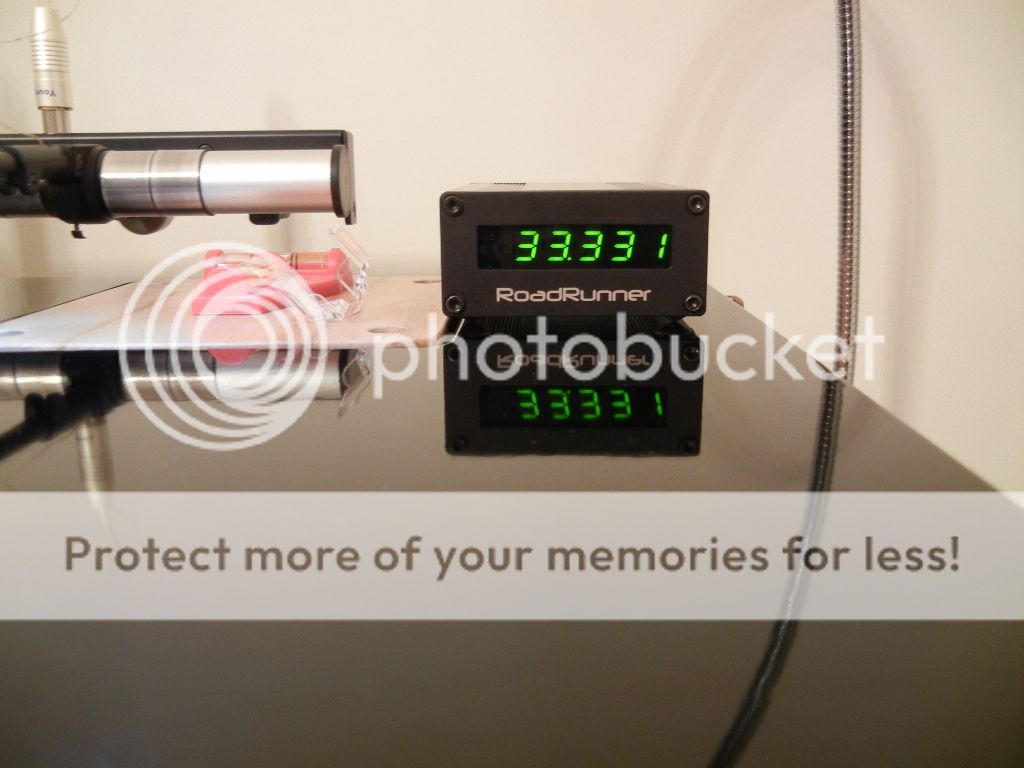Falcon / SDS frequency display
The spectrum analyzer displays the amplitude response in the frequency domain. The signals displayed are the reference signal used to derive the final 60Hz output of the power supplies. In the case of the VPI SDS, the 3.93 MHz signal is developed by a circuit known as a phase locked loop or PLL. This signal is divided by 65536 to produce the 60Hz output. The 3.93MHz reference signal is no longer as stable as the crystal oscillator it is locked to. Because the PLL uses feedback with a loop filter, the signal is always "hunting" above and below the ideal frequency as can be seen by the jittery waveform on the analyzer display. As HW himself has said many times: A system with feedback to control it's speed (or frequency) knows where it has been, not where it is, as it is constantly correcting.
The Falcon (and Eagle) use Direct Digital Synthesis to create the final 60Hz output. The 60Hz output frequency is directly derived from the stable crystal source using a digital circuit to divide the crystal frequency down to 60Hz. As can be seen on the spectrum analyzer, the crystal source is rock solid and does not waiver as the PLL signal does.
On the display for the SDS's PLL signal, the span is 100kHz so each division on the graticule is 10kHz. When the 3.93 MHz signal is divided down by 65536, the jitter will be divided down by the same amount so if we were able to look at the 60Hz signal with a spectrum analyzer with the same resolution capability, the span would be ~1.5Hz and each division would be 0.15Hz. The time difference (or smear) between 60.0Hz and 60.1Hz is ~27µSec. This is nearly impossible to see on an oscilloscope display set view 60Hz, but it is there nonetheless.
The spectrum analyzer displays the amplitude response in the frequency domain. The signals displayed are the reference signal used to derive the final 60Hz output of the power supplies. In the case of the VPI SDS, the 3.93 MHz signal is developed by a circuit known as a phase locked loop or PLL. This signal is divided by 65536 to produce the 60Hz output. The 3.93MHz reference signal is no longer as stable as the crystal oscillator it is locked to. Because the PLL uses feedback with a loop filter, the signal is always "hunting" above and below the ideal frequency as can be seen by the jittery waveform on the analyzer display. As HW himself has said many times: A system with feedback to control it's speed (or frequency) knows where it has been, not where it is, as it is constantly correcting.
The Falcon (and Eagle) use Direct Digital Synthesis to create the final 60Hz output. The 60Hz output frequency is directly derived from the stable crystal source using a digital circuit to divide the crystal frequency down to 60Hz. As can be seen on the spectrum analyzer, the crystal source is rock solid and does not waiver as the PLL signal does.
On the display for the SDS's PLL signal, the span is 100kHz so each division on the graticule is 10kHz. When the 3.93 MHz signal is divided down by 65536, the jitter will be divided down by the same amount so if we were able to look at the 60Hz signal with a spectrum analyzer with the same resolution capability, the span would be ~1.5Hz and each division would be 0.15Hz. The time difference (or smear) between 60.0Hz and 60.1Hz is ~27µSec. This is nearly impossible to see on an oscilloscope display set view 60Hz, but it is there nonetheless.
Last edited:
Falcon DDS vs SDS PLL
If you really want to see how bad the performance of a PLL circuit is compared to DDS, check out this video on YouTube:
Falcon vs SDS
The video shows what happens when the SDS changes from 60Hz to 81Hz, 1Hz at a time, as it does when you change from 33 RPM to 45 RPM (or back). A 1Hz shift is ~1.25% at 81Hz and you can see how much this affects the stability of the output signal. This is why the SDS has to ramp the frequency so slowly when going between the two speeds. If it tried to move from 60Hz to 81Hz in one step, the results would be disastrous.
If you really want to see how bad the performance of a PLL circuit is compared to DDS, check out this video on YouTube:
Falcon vs SDS
The video shows what happens when the SDS changes from 60Hz to 81Hz, 1Hz at a time, as it does when you change from 33 RPM to 45 RPM (or back). A 1Hz shift is ~1.25% at 81Hz and you can see how much this affects the stability of the output signal. This is why the SDS has to ramp the frequency so slowly when going between the two speeds. If it tried to move from 60Hz to 81Hz in one step, the results would be disastrous.
Eagle Review
We love hearing from customers, especially when they write testimonials like this:
Sam, New York-
"The Eagle has landed! After using the Roadrunner to monitor my Scoutmaster table speed for the last month, I finally decided to bite the bullet and go for the Eagle PSU. Without the PSU, it was quite evident that speed fluctuations were/are common with a belt driven stand alone motor setup. Move the motor a hair, and the speed changes. Clean and powder the belt, and the speed changes. I'm sure that other things such as bearing grease, tracking, etc., also contribute to speed changes. Even when I zeroed in the speed perfectly, by the time one side of the record was over, the speed had fluctuated above or below the 33.3 or 45 rpm setting. It was minor, going between say 33.000 and 33.375, and that's after getting the distance between the motor and platter right on at the start of a listening session. I was tired of having to check and adjust for speed all the time."
"In comes the Eagle PSU. Well made, dual box design to handle most high power motors up to 15 watts. Easy setup and then I pushed the button and watched it go to work. After about 8 seconds, the roadrunner indicated a speed of between 33.332 and 33.336. And it stays in that area for the entire side! Love it. No more measuring and adjusting speed. Fully automatic."
"Now onto the sound. Did I hear a difference using the Eagle vs the Scoutmaster going directly to the wall? I put on my Classic Records 45 rpm of Crosby, Stills and Nash self titled pressing. I played "Helplessly Hoping." I listened twice fully through and it sounded great. I then took the Eagle out of the chain and listened again. Here's where you notice a difference. Soundstage width had shrunken. Clarity of voices had also diminished somewhat, everything being somewhat homogenized together as opposed to separate entities within the soundstage. This happened record after record. Once you hear the clarity of separation with the PSU in place, you won't want to take it out. I can only assume that this is the result of the motor ramp down voltage after the motor gets the table up to correct speed. Less motor vibration, I would imagine. Of course, notes such as those coming from a piano had fantastic decay with no speed fluctuations noticeable. All in all, I'm very happy at what I am hearing. I can't comment on the SDS from VPI as I never owned one. But the sound here is good and I never have to worry about checking speed again."
We love hearing from customers, especially when they write testimonials like this:
Sam, New York-
"The Eagle has landed! After using the Roadrunner to monitor my Scoutmaster table speed for the last month, I finally decided to bite the bullet and go for the Eagle PSU. Without the PSU, it was quite evident that speed fluctuations were/are common with a belt driven stand alone motor setup. Move the motor a hair, and the speed changes. Clean and powder the belt, and the speed changes. I'm sure that other things such as bearing grease, tracking, etc., also contribute to speed changes. Even when I zeroed in the speed perfectly, by the time one side of the record was over, the speed had fluctuated above or below the 33.3 or 45 rpm setting. It was minor, going between say 33.000 and 33.375, and that's after getting the distance between the motor and platter right on at the start of a listening session. I was tired of having to check and adjust for speed all the time."
"In comes the Eagle PSU. Well made, dual box design to handle most high power motors up to 15 watts. Easy setup and then I pushed the button and watched it go to work. After about 8 seconds, the roadrunner indicated a speed of between 33.332 and 33.336. And it stays in that area for the entire side! Love it. No more measuring and adjusting speed. Fully automatic."
"Now onto the sound. Did I hear a difference using the Eagle vs the Scoutmaster going directly to the wall? I put on my Classic Records 45 rpm of Crosby, Stills and Nash self titled pressing. I played "Helplessly Hoping." I listened twice fully through and it sounded great. I then took the Eagle out of the chain and listened again. Here's where you notice a difference. Soundstage width had shrunken. Clarity of voices had also diminished somewhat, everything being somewhat homogenized together as opposed to separate entities within the soundstage. This happened record after record. Once you hear the clarity of separation with the PSU in place, you won't want to take it out. I can only assume that this is the result of the motor ramp down voltage after the motor gets the table up to correct speed. Less motor vibration, I would imagine. Of course, notes such as those coming from a piano had fantastic decay with no speed fluctuations noticeable. All in all, I'm very happy at what I am hearing. I can't comment on the SDS from VPI as I never owned one. But the sound here is good and I never have to worry about checking speed again."
Falcon vs SDS Video Part II
Part II of our video comparison between the Falcon PSU and the VPI SDS power supply can be seen here:
Falcon vs SDS Part II
Part II of our video comparison between the Falcon PSU and the VPI SDS power supply can be seen here:
Falcon vs SDS Part II
Rich-
How about more pics of your table, that's an interesting build.
Happy to comply Bill.
I started with this neglected 60Hz US model.
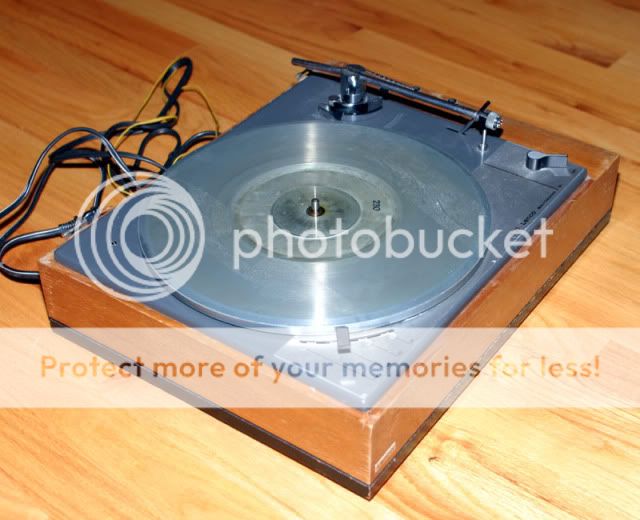
Layers of Baltic Birch were cut and glued and screwed together. I beveled the edges. Original plans were for a 12" Moerch DP-6 arm, but a great deal on a lightly used Advanced Audio MG-1 linear air bearing popped up. An armboard off the rear was added. I also cut the top plate and retained the OEM on/off switch position and linkage. The linkage disengages the idler from motor spindle and platter when turned off, so no skid marks or flat spots develop on the idler. While not pictured, I countersunk and installed T-nuts in the mid layers of Birch for the top plate and arm boards. This way I never have to worry about stripping wood screws out.
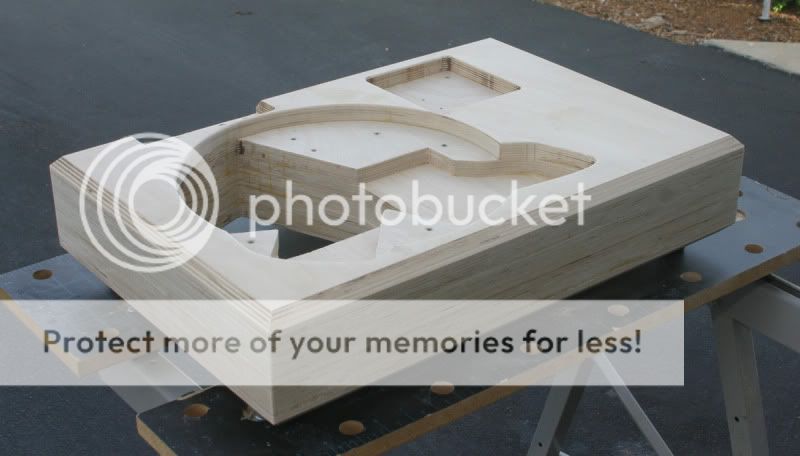
A larger and well sealed Mirko stainless platter bearing was added.
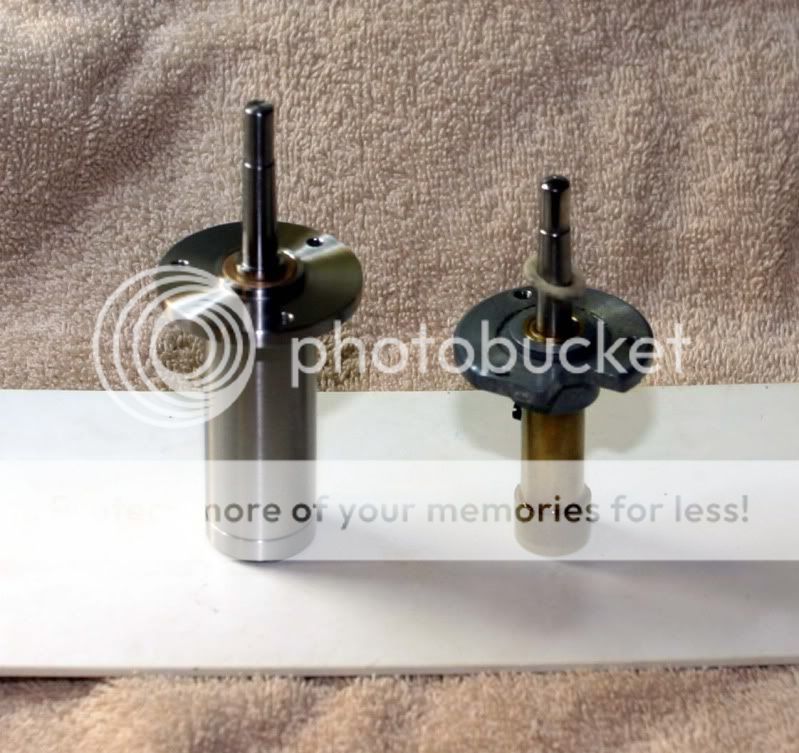
It was sealed and shot with an automotive clear coat finish, Cadillac black. I use rubber and graphite platter mats.
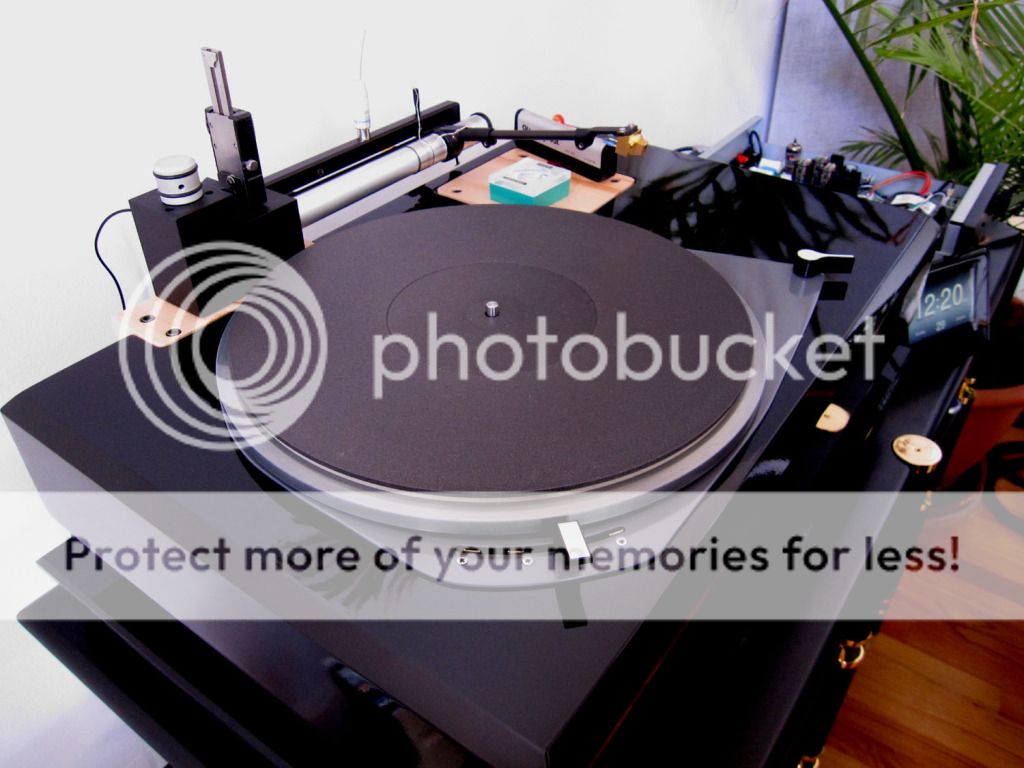
I got tired of the all black and decided to add a maple wrap to match the arm boards. The walnut corner accents were for a Lenco forum member whom didn't like the brown grain in the maple arm boards.
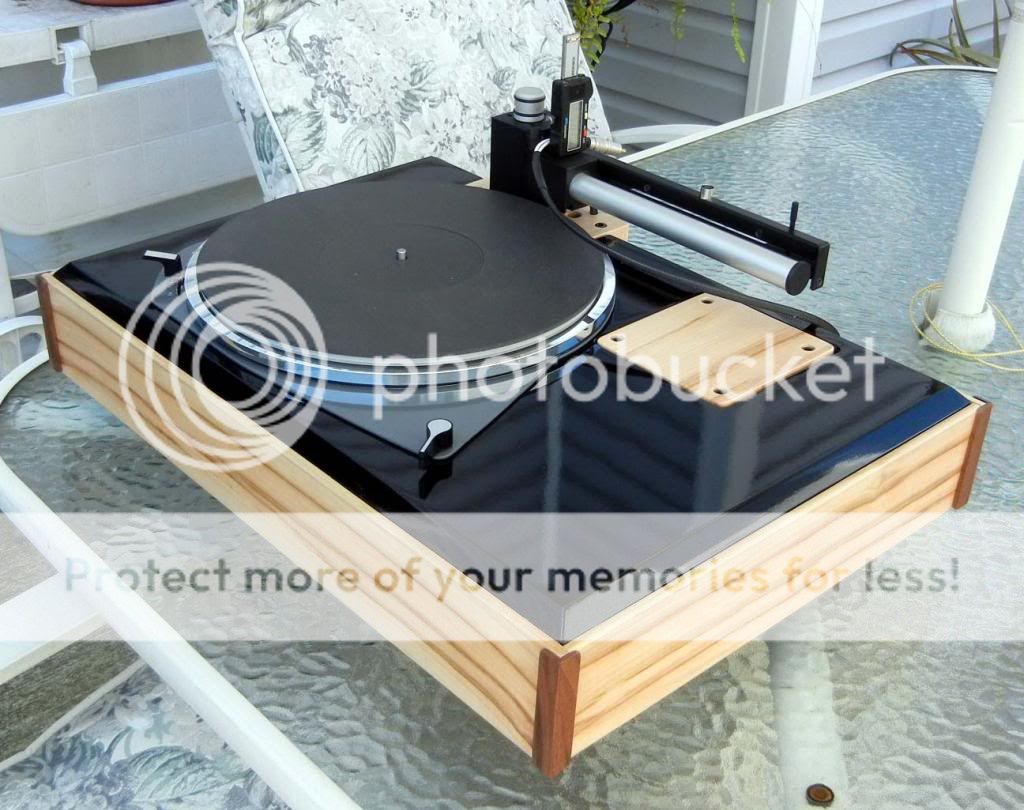
Last edited:
Part II of our video comparison between the Falcon PSU and the VPI SDS power supply can be seen here:
Falcon vs SDS Part II
Nice job on the video! Clearer and more to the point than the first one. Liked the last frames with the Scout on "why it matters" -- great for Noobies.
Part II of our video comparison between the Falcon PSU and the VPI SDS power supply can be seen here:
Falcon vs SDS Part II
I picked up a Falcon and Tach for my 7-8W motored Well Tempered Classic TT. Both units are working great and I'm very happy with each. I was, however, considering trading in my WT for a VPI machine, not sure which one yet. Are there any issues with respect to my Falcon and Tach working with VPI motors?
If so, which motor should I steer clear of?
thanks
Some of the VPI tables use a 5 watt motor. My old VPI Scout is one, using the 600 rpm motor. Many now use a 7.5 watt motor. I think most of the 300rpm Hurst motors are 7.5 watt. The 5 watt motor works great with the Falcon. Really made an audible improvement. However, the 7.5 motor might be too much load for the Falcon. If you get one of those, you might need to trade up to an Eagle.
HTH
HTH
Some of the VPI tables use a 5 watt motor. My old VPI Scout is one, using the 600 rpm motor. Many now use a 7.5 watt motor. I think most of the 300rpm Hurst motors are 7.5 watt. The 5 watt motor works great with the Falcon. Really made an audible improvement. However, the 7.5 motor might be too much load for the Falcon. If you get one of those, you might need to trade up to an Eagle.
HTH
Sorry, my mistake, I already have the Eagle. not the Falcon, so I should not have an issue with any VPI motor, agree?
No worries. The Eagle will work with any of the VPI motor combos including single or dual motor flywheel assemblies.
So, i have my eye on a new VPI Prime table. It's a relative new table so I don't know how much is know about it. Does anyone know if there is enough room below the platter to attach the magnet and sensor? I had a problem that needed a workaround on my Well Tempered table, but that won't work on this table.
One of our repeat customers did a video using the Eagle and RoadRunner with the VPI prime here: Eagle with VPI Prime
There is room between the plinth and platter for the sensor/magnet.
There is room between the plinth and platter for the sensor/magnet.
One of our repeat customers did a video using the Eagle and RoadRunner with the VPI prime here: Eagle with VPI Prime
There is room between the plinth and platter for the sensor/magnet.
Thank you, I just viewed this and I'm syched to get my new table. Awaiting delivery! Anyone want a great Well Tempered Classic table?
- Status
- This old topic is closed. If you want to reopen this topic, contact a moderator using the "Report Post" button.
- Home
- Vendor's Bazaar
- Digital Turntable Tachometer and DDS based PSU

